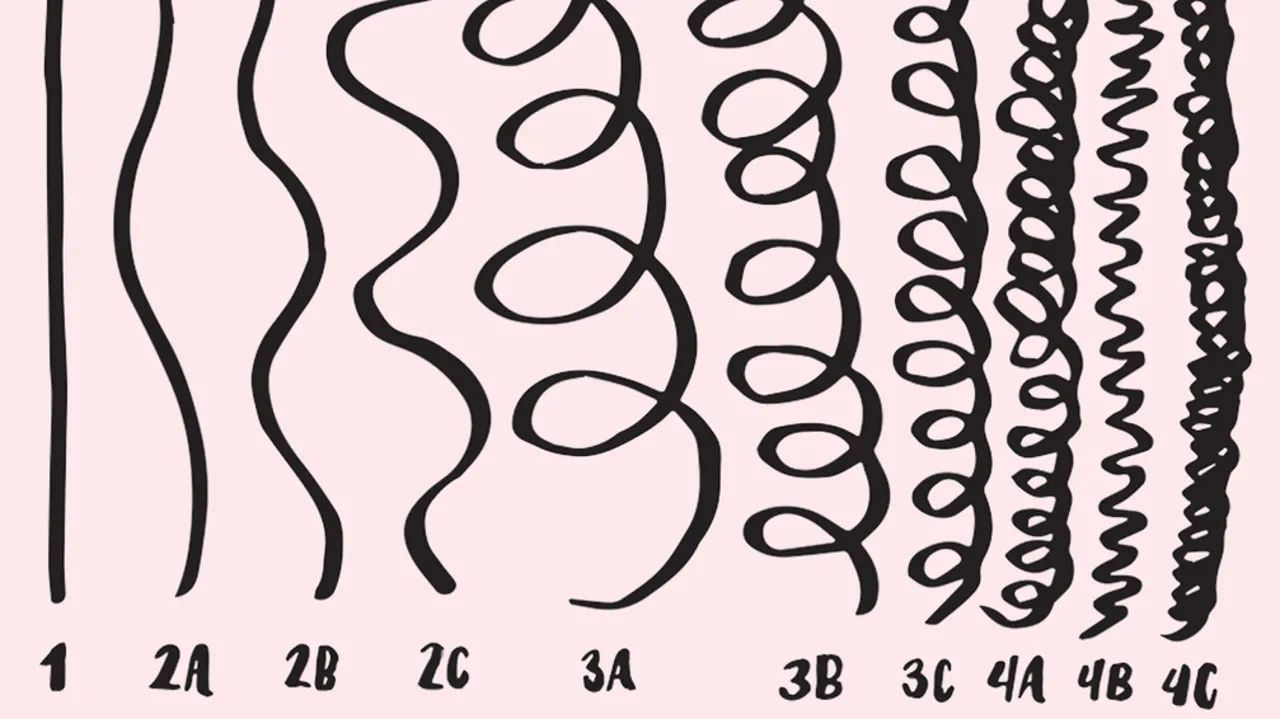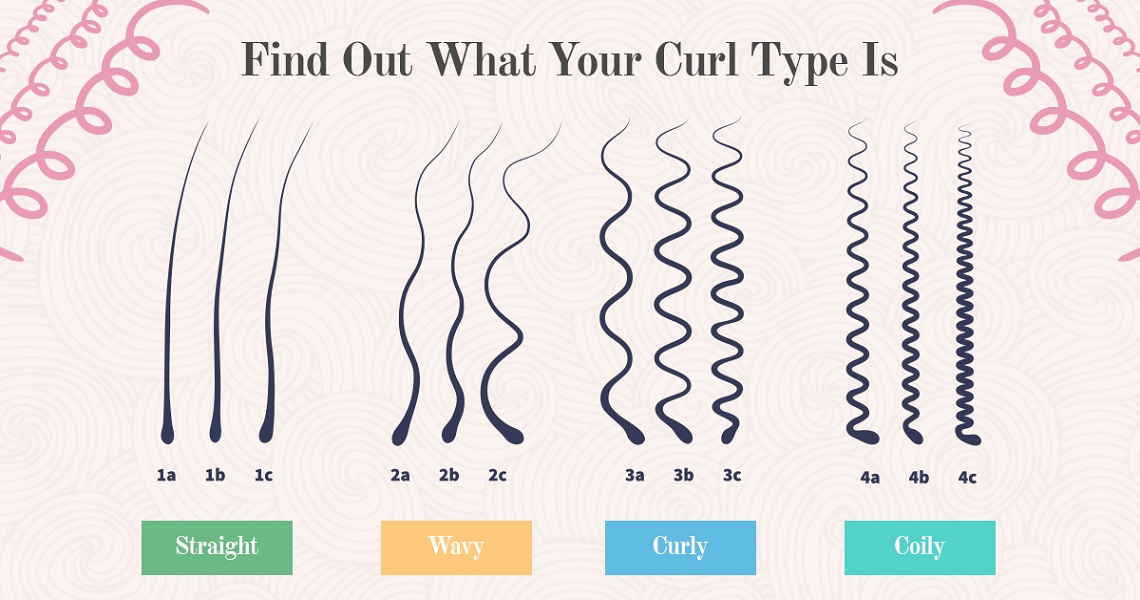Have you ever wondered why your curl pattern is getting looser? If you're noticing changes in your hair texture, you're not alone. Many people experience shifts in their curl patterns over time, and understanding the reasons behind these changes can help you maintain healthier, more vibrant curls. In this article, we'll explore the science behind why your curl pattern might be getting looser and provide actionable tips to manage and care for your hair.
Our hair is a reflection of our health, genetics, and lifestyle. Changes in your curl pattern can be influenced by a variety of factors, from internal biological processes to external environmental conditions. By understanding these factors, you can take proactive steps to ensure your hair remains strong and healthy, regardless of its texture.
In this article, we'll delve into the reasons why your curl pattern might be getting looser, provide expert advice on maintaining your hair's health, and offer practical solutions to help you embrace your natural texture. Whether you're a curly-haired enthusiast or simply curious about your hair's behavior, this guide will equip you with the knowledge you need to make informed decisions about your hair care routine.
Read also:Celebrity Makeup Tips Unveiling The Secrets Behind Their Flawless Looks
Table of Contents
- Understanding Your Curl Pattern
- Genetic Factors: The Role of DNA in Curl Changes
- Hormonal Changes: How Hormones Impact Curl Texture
- Environmental Influences: The Impact of Climate and Pollution
- Product Usage: Are Your Hair Products Causing Changes?
- Lifestyle Factors: Stress, Diet, and Exercise
- Medical Conditions: Health Issues That Affect Hair Texture
- Tips for Managing Looser Curls
- Common Mistakes to Avoid When Dealing with Looser Curls
- Conclusion: Embracing Your Unique Hair Journey
Understanding Your Curl Pattern
Your curl pattern is determined by the shape of your hair follicles and the structure of your hair strands. Hair follicles that are oval-shaped produce curls, while those that are round produce straight hair. Over time, various factors can cause your curl pattern to change, resulting in looser curls or even straighter hair. Understanding the reasons behind these changes is the first step toward managing your hair effectively.
Types of Curl Patterns
There are several types of curl patterns, each with its own unique characteristics:
- Type 1: Straight hair
- Type 2: Wavy hair
- Type 3: Curly hair
- Type 4: Coily hair
Knowing your curl type can help you tailor your hair care routine to meet your specific needs.
Genetic Factors: The Role of DNA in Curl Changes
Genetics play a significant role in determining your curl pattern. Your DNA contains instructions for the shape and structure of your hair follicles, which directly influence your curl type. However, genetic changes, such as those that occur during puberty or menopause, can alter your curl pattern over time.
Epigenetics and Hair Texture
Epigenetics refers to changes in gene expression that do not involve alterations to the underlying DNA sequence. These changes can be influenced by environmental factors and lifestyle choices, potentially leading to shifts in your curl pattern. For example, stress or poor nutrition may trigger epigenetic changes that result in looser curls.
Hormonal Changes: How Hormones Impact Curl Texture
Hormones such as estrogen, progesterone, and testosterone can significantly affect your hair's texture and growth. During life stages like puberty, pregnancy, and menopause, hormonal fluctuations may cause your curl pattern to become looser or even straighter.
Read also:Master The Art Of Warm Winter Style A Comprehensive Guide
Pregnancy and Postpartum Hair Changes
During pregnancy, increased levels of estrogen can lead to thicker, shinier hair. However, after childbirth, hormonal levels may drop, causing your curl pattern to change temporarily. Many women report looser curls or straighter hair during the postpartum period, but these changes often resolve on their own within a few months.
Environmental Influences: The Impact of Climate and Pollution
External factors such as climate and pollution can also affect your curl pattern. Humidity, for example, can cause your curls to expand, while dry conditions may lead to frizz. Additionally, exposure to pollution and harsh chemicals can damage your hair, potentially altering its texture over time.
Protecting Your Hair from Environmental Damage
To minimize the impact of environmental factors on your curl pattern, consider the following tips:
- Use a silk or satin pillowcase to reduce friction and breakage.
- Apply a leave-in conditioner or styling cream to protect your hair from humidity.
- Wear a hat or scarf when spending extended periods outdoors in polluted areas.
Product Usage: Are Your Hair Products Causing Changes?
The products you use on your hair can have a significant impact on its texture and health. Certain chemicals, such as those found in relaxers or texturizers, can alter your curl pattern by breaking down the bonds in your hair strands. Additionally, overuse of heat styling tools may cause temporary changes in your hair's texture.
Choosing the Right Products for Your Curl Type
When selecting hair care products, look for formulas specifically designed for your curl type. Avoid products containing sulfates, silicones, and alcohol, as these ingredients can dry out your hair and exacerbate changes in your curl pattern.
Lifestyle Factors: Stress, Diet, and Exercise
Your lifestyle choices can also influence your hair's texture and health. Chronic stress, for example, can lead to hormonal imbalances that affect your curl pattern. Similarly, a diet lacking in essential nutrients may weaken your hair, making it more prone to texture changes.
Improving Your Hair Health Through Lifestyle Changes
To promote healthier, more consistent curls, incorporate the following practices into your daily routine:
- Practice stress-reducing techniques such as yoga or meditation.
- Consume a balanced diet rich in vitamins and minerals, particularly biotin, zinc, and omega-3 fatty acids.
- Engage in regular physical activity to improve circulation and promote hair growth.
Medical Conditions: Health Issues That Affect Hair Texture
Certain medical conditions, such as thyroid disorders or autoimmune diseases, can impact your hair's texture and growth. If you notice sudden or significant changes in your curl pattern, consult a healthcare professional to rule out underlying health issues.
Seeking Professional Advice
A dermatologist or trichologist can provide expert guidance on managing changes in your hair texture. They may recommend blood tests, scalp examinations, or other diagnostic tools to identify the root cause of your concerns.
Tips for Managing Looser Curls
If your curl pattern is becoming looser, there are several strategies you can use to maintain healthy, defined curls:
- Use a curl-enhancing shampoo and conditioner to restore moisture and definition.
- Apply a curl-defining gel or mousse to lock in your curls and prevent frizz.
- Avoid overwashing your hair, as this can strip it of its natural oils and exacerbate texture changes.
Common Mistakes to Avoid When Dealing with Looser Curls
Many people make mistakes when trying to manage changes in their curl pattern. Some common errors include:
- Using heat styling tools excessively, which can damage your hair and alter its texture.
- Not moisturizing your hair adequately, leading to dryness and breakage.
- Ignoring the importance of protective styling, which can help preserve your curls and prevent damage.
Conclusion: Embracing Your Unique Hair Journey
In conclusion, understanding why your curl pattern is getting looser involves examining a variety of factors, from genetics and hormones to lifestyle choices and environmental influences. By following the tips outlined in this article, you can maintain healthier, more vibrant curls and embrace your unique hair journey with confidence.
We encourage you to share your experiences and ask questions in the comments section below. Additionally, feel free to explore our other articles for more insights into hair care and styling. Together, we can help you achieve the best version of your hair possible!
Data Source: National Center for Biotechnology Information, Mayo Clinic


